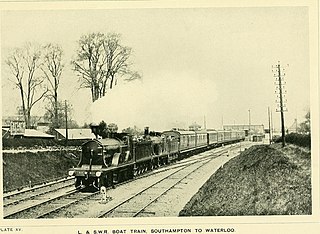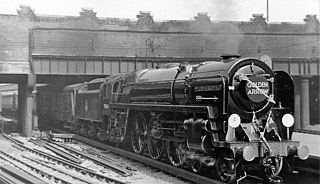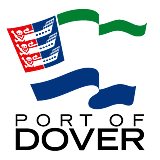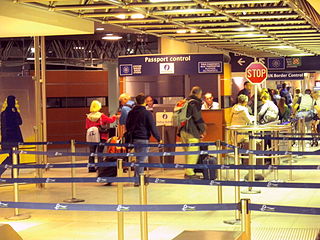A boat train is a passenger train operating to a port for the specific purpose of making connection with a passenger ship, such as a ferry, ocean liner, or cruise ship. Through ticketing is normally available.
Contents

A boat train is a passenger train operating to a port for the specific purpose of making connection with a passenger ship, such as a ferry, ocean liner, or cruise ship. Through ticketing is normally available.


The London and South Western Railway was a railway company in England from 1838 to 1922. Starting as the London and Southampton Railway, its network extended from London to Plymouth via Salisbury and Exeter, with branches to Ilfracombe and Padstow and via Southampton to Bournemouth and Weymouth. It also had many routes connecting towns in Hampshire and Berkshire, including Portsmouth and Reading. In the grouping of railways in 1923 the LSWR amalgamated with other railways to create the Southern Railway.

The Southern Railway (SR), sometimes shortened to 'Southern', was a British railway company established in the 1923 Grouping. It linked London with the Channel ports, South West England, South coast resorts and Kent. The railway was formed by the amalgamation of several smaller railway companies, the largest of which were the London and South Western Railway (LSWR), the London, Brighton and South Coast Railway (LB&SCR) and the South Eastern and Chatham Railway (SE&CR). The construction of what was to become the Southern Railway began in 1838 with the opening of the London and Southampton Railway, which was renamed the London & South Western Railway.

Victoria Dock was a dock on the River Mersey, England, and part of the Port of Liverpool. Situated in the northern dock system, it was connected to Trafalgar Dock to the north and West Waterloo Dock to the south.

The Port of Liverpool is the enclosed 7.5-mile (12.1 km) dock system that runs from Brunswick Dock in Liverpool to Seaforth Dock, Seaforth, on the east side of the River Mersey and the Birkenhead Docks between Birkenhead and Wallasey on the west side of the river. The port was extended in 2016 by the building of an in-river container terminal at Seaforth Dock, named Liverpool2. The terminal can berth two 14,000 container Post-Panamax ships.

The Golden Arrow was a luxury boat train of the Southern Railway and later British Railways. It linked London with Dover, where passengers took the ferry to Calais to join the Flèche d’Or of the Chemin de Fer du Nord and later SNCF which took them on to Paris.

A passenger terminal is a structure in a port which services passengers boarding and leaving water vessels such as ferries, cruise ships and ocean liners. Depending on the types of vessels serviced by the terminal, it may be named ferry terminal, cruise terminal, marine terminal or maritime passenger terminal. As well as passengers, a passenger terminal sometimes has facilities for automobiles and other land vehicles to be picked up and dropped off by the water vessel.

Fishguard Harbour railway station serves the port of Fishguard Harbour, Wales. It is the terminus of one of the branches of the West Wales Line from Swansea. The area is also now served by Fishguard and Goodwick railway station.
The Night Ferry was an international boat train from London Victoria to Paris Gare du Nord that crossed the English Channel on a train ferry. It ran from 1936 until 1939 when it ceased due to the onset of World War II. It resumed in 1947, ceasing in 1980. It was operated by Compagnie Internationale des Wagons-Lits until 1977 and then British Rail.

Dutchflyer is an integrated passenger service between the United Kingdom and the Netherlands. Formerly known as Amsterdam Express, Dutchflyer is a rail/sea/rail service operated jointly by Stena Line, the Dutch state railway operator Nederlandse Spoorwegen and its UK subsidiary Greater Anglia, and the Rotterdam metro and bus company Rotterdamse Elektrische Tram.

London has an extensive and developed transport network which includes both private and public services. Journeys made by public transport systems account for 37% of London's journeys while private services accounted for 36% of journeys, walking 24% and cycling 2%. London's public transport network serves as the central hub for the United Kingdom in rail, air and road transport.

The Port of Dover is a cross-channel ferry, cruise terminal, maritime cargo and marina facility situated in Dover, Kent, south-east England. It is the nearest English port to France, at just 34 kilometres (21 mi) away, and is one of the world's busiest maritime passenger ports, with 11.7 million passengers, 2.6 million lorries, 2.2 million cars and motorcycles and 80,000 coaches passing through it in 2017, and with an annual turnover of £58.5 million a year. This contrasts with the nearby Channel Tunnel, the only fixed link between the island of Great Britain and the European mainland, which now handles an estimated 20 million passengers and 1.6 million trucks per year.

SS Traffic was a tender of the White Star Line, and the fleetmate to the Nomadic. She was built for the White Star Line by Harland and Wolff, at Belfast, to serve the Olympic-class ocean liners. In Cherbourg, her role was to transport third-class passengers and mails between the port and the liners anchored in the harbour, while the Nomadic was tasked with transporting first-class and second-class passengers.

The Port of Southampton is a passenger and cargo port in the central part of the south coast of England. The modern era in the history of the Port of Southampton began when the first dock was inaugurated in 1843. The port has been owned and operated by Associated British Ports since 1982, and is the busiest cruise terminal and second largest container port in the UK. The volume of port traffic categorises Southampton as a Medium-Port City globally.
Liverpool in North West England, is a major British city with significant road, rail, and ferry networks, in addition to an international airport and a well-known dock system. As with most other major UK cities, Liverpool's transport infrastructure is centred on its road and rail networks. Public transport services within the city are controlled and run by Merseytravel.

The Liverpool Cruise Terminal is a 350-metre-long (1,150 ft) floating structure situated on the River Mersey enabling large cruise ships to visit without entering the enclosed dock system or berthing mid-river and tendering passengers ashore. The terminal was officially opened on 21 September 2007 by the Duke of Kent when the Queen Elizabeth 2 berthed at the terminal. The current terminal is composed mainly of a floating landing stage, with a small passenger terminal building, but a larger terminal is under construction. The Terminal is run and operated by Cruise Liverpool, the department within Culture Liverpool at Liverpool City Council.

The Port of Southampton is a major passenger and cargo port located in the central part of the south coast of England. It has been an important port since the Roman occupation of Britain nearly two thousand years ago, and has a multifaceted history. From the Middle Ages to the end of the 20th century, it was a centre for naval shipbuilding and a departure point for soldiers going to war. The port also played a role in the development of hovercraft, flying boat services, seaplanes and the Spitfire fighter plane. Before the advent of jet travel, Southampton was Britain's gateway to the world. The port also played a minor role in the history of Britain's canals.

Juxtaposed controls are a reciprocal arrangement between Belgium, France, the Netherlands and the United Kingdom whereby border controls on certain cross-Channel routes take place before boarding the train or ferry, rather than upon arrival after disembarkation. With the exception of the Eurotunnel Shuttle route, customs checks remain unaffected by juxtaposed immigration controls and continue to take place upon arrival after disembarkation. Belgium, France and the Netherlands are all member states of the European Union and part of the border-free Schengen Area. The United Kingdom, on the other hand, has never participated in the Schengen Area, even when it was a member state of the European Union. As a result, juxtaposed controls aim to increase the convenience and efficiency of border checks when travelling by train or ferry between the Schengen Area and the UK by removing the need for immigration checks on arrival and by streamlining checks on departure. At the same time, juxtaposed controls are intended to detect and prevent illegal immigration. In 2016, there were over 56,000 instances when people were refused entry to the UK at the juxtaposed controls.
La Flèche d’Or was a luxury boat train of the Chemin de Fer du Nord and later SNCF. It linked Paris with Calais, where passengers took the ferry to Dover to join the Golden Arrow of the Southern Railway and later British Railways, which took them on to London.

TSS Canterbury was a ferry completed in 1929 to link the Golden Arrow and La Flèche d'Or trains to form the prestige London–Dover–Calais–Paris service.

The Dover–Dunkerque train ferry was one of two regular rail freight train ferries that operated between the United Kingdom and Europe. The route connected the English port of Dover, with the French port of Dunkerque. After rationalisation of other Anglo-European train ferries, the Dover to Dunkerque sailing was the last to survive, though it ended its days on freight carryings only after the Night Ferry passenger service ended in 1980. The last Dover to Dunkerque wagon-freight ferry service became redundant upon the opening of the Channel Tunnel when freight was carried directly through the Channel Tunnel.